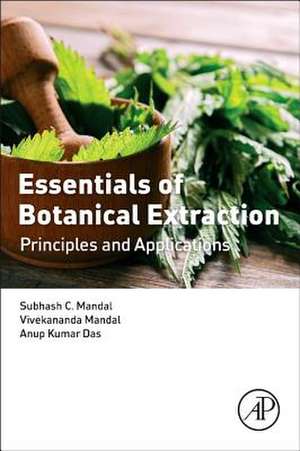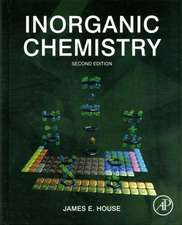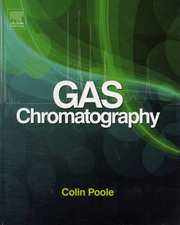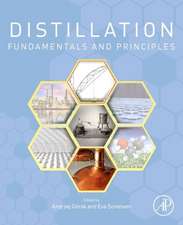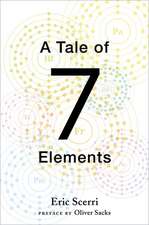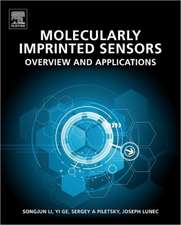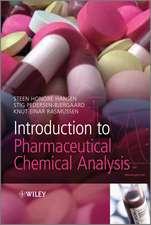Essentials of Botanical Extraction: Principles and Applications
Autor Subhash C. Mandal, Vivekananda Mandal, Anup Kumar Dasen Limba Engleză Paperback – 4 feb 2015
- Reviews the history and current state of natural product drug discovery and development, highlighting successes and current issues
- Explains the application of chemometric tools in extraction process design and method development
- Introduces process intensification as applied to the processing of medicinal plant extracts for rapid and cost-effective extraction
Preț: 437.77 lei
Preț vechi: 528.85 lei
-17% Nou
Puncte Express: 657
Preț estimativ în valută:
83.77€ • 91.28$ • 70.59£
83.77€ • 91.28$ • 70.59£
Carte tipărită la comandă
Livrare economică 16-30 aprilie
Preluare comenzi: 021 569.72.76
Specificații
ISBN-13: 9780128023259
ISBN-10: 0128023252
Pagini: 220
Ilustrații: black & white illustrations
Dimensiuni: 152 x 229 x 12 mm
Greutate: 0.3 kg
Editura: ELSEVIER SCIENCE
ISBN-10: 0128023252
Pagini: 220
Ilustrații: black & white illustrations
Dimensiuni: 152 x 229 x 12 mm
Greutate: 0.3 kg
Editura: ELSEVIER SCIENCE
Public țintă
Analytical chemists, pharmacognosists, medicinal chemists, and graduate level students in these disciplinesCuprins
1. Introduction2. History and Background on the Use of Natural Products Obtained From Plants as Therapeutic Agents 2.1. A General Overview 2.2. Drug Usage During Prehistoric Period 2.3. Developments and Drug Usage During Ancient Times/Pre-Hellenic Civilizations 2.4. Drug Discovery and Development During the Middle Ages 2.5. Developments and Drug Usage During Last Phases of Middle Ages3. Botanicals as a Screening Source of New Drugs: Past Success Stories and Present Day Concerns 3.1. Historic Role of Botanicals 3.2. Botanicals as Sources of New Leads Over the Past Three Decades4. What All Should Know About Plant Drugs 4.1. Role of Plants in Drug Development 4.2. Factors Thought to be the Reason for Declining Interest in Botanicals 4.3. Approaches and Strategies to Improve the Status of Drug Discovery from Botanicals 4.4. Approaches to Medicinal Plant Selection Prior to Extraction 4.5. An Overview on Pre-Extraction Techniques5. Extraction of Botanicals 5.1. Understanding the Link Between Botanical Extraction and their Standardization 5.2. General Extraction Approaches and Theories 5.3. Factors Affecting Extraction of Botanicals6. Classification Of Extraction Methods 6.1. Classification of Various Non-Conventional Extraction Techniques 6.2. Removal of Unwanted and Interfering Components After Extraction7. Innovative Extraction Process Design and Optimization 7.1. Terminologies We Need to Know 7.2. Issues Related to Design of Experiments 7.3. Response Surface Methodology (RSM) as a Tool for Optimization in Microwave Assisted Extraction (MAE) 7.4. Response Surface Methodology (RSM) as a Tool for Optimization in Supercritical Fluid Extraction (SFE) 7.5. Response Surface Methodology (RSM) as a Tool for Optimization in Accelerated Solvent Extraction (ASE)8. Identification Strategies Of Phytocompounds 8.1. Identification Strategy for Volatile Compounds 8.2. Identification Strategy for Non-Volatile Compounds 8.3. Identification of Known Compounds Using Reference Standards 8.4. Identification of Known Compounds Without Reference Standards 8.5. Identification of Compounds with Unknown Structure 8.6. Stages in Structure Elucidation9. Qualitative Phytochemical Screening 9.1. Alkaloids 9.2. Glycosides 9.3. Terpenoids 9.4. Steroids 9.5. Flavonoids 9.6. Coumarin Drugs 9.7. Essential Oil 9.8. Carbohydrate 9.9. Tannins and Phenolic Compounds 9.10. Proteins and Amino Acids 9.11. Spray Reagents10. Profiling Crude Extracts for Rapid Identification of Bioactive Compounds 10.1. Techniques Routinely Employed in Dereplication Study 10.2. Stages Where Dereplication is Applied During Drug Discovery from Botanicals 10.3. Construction and Characterization of Crude Extract Libraries
